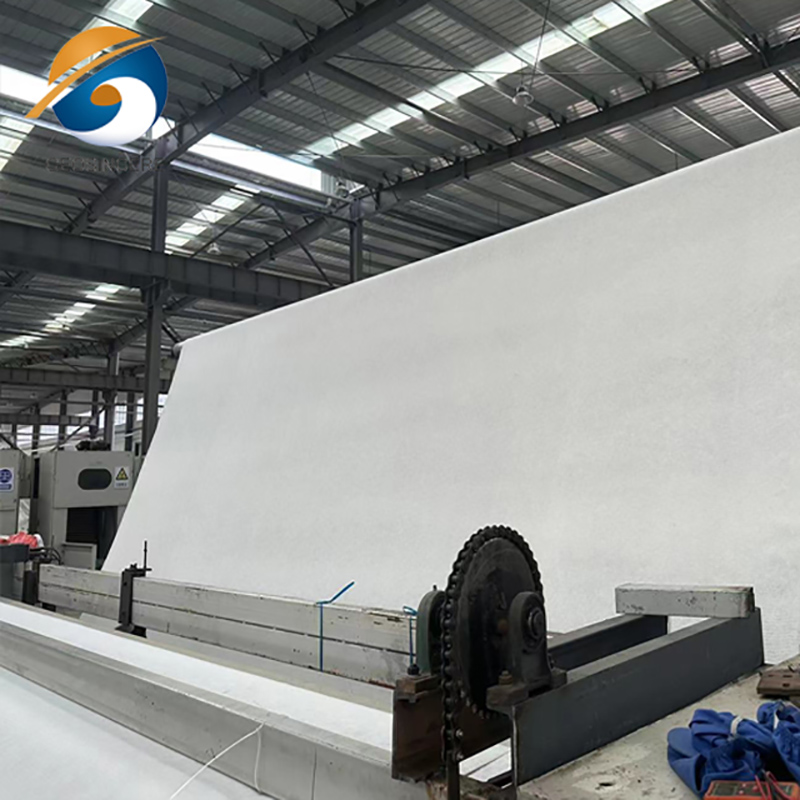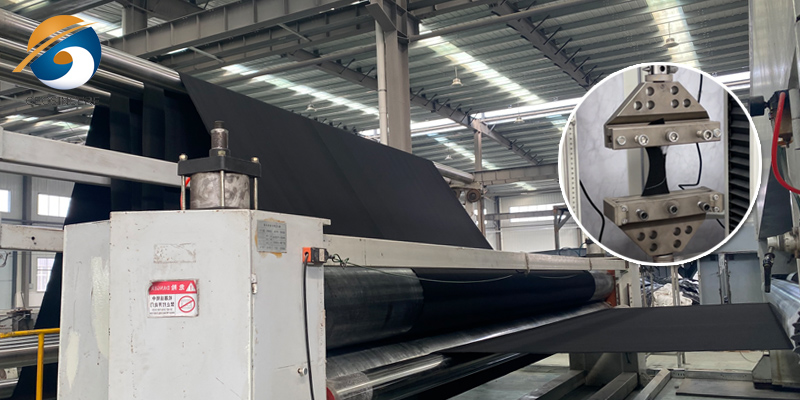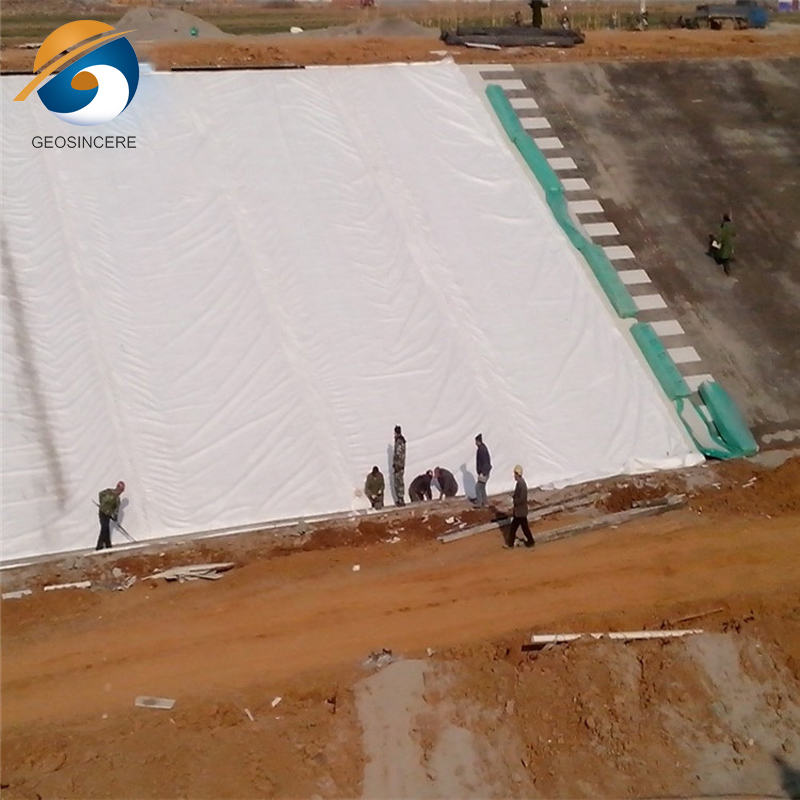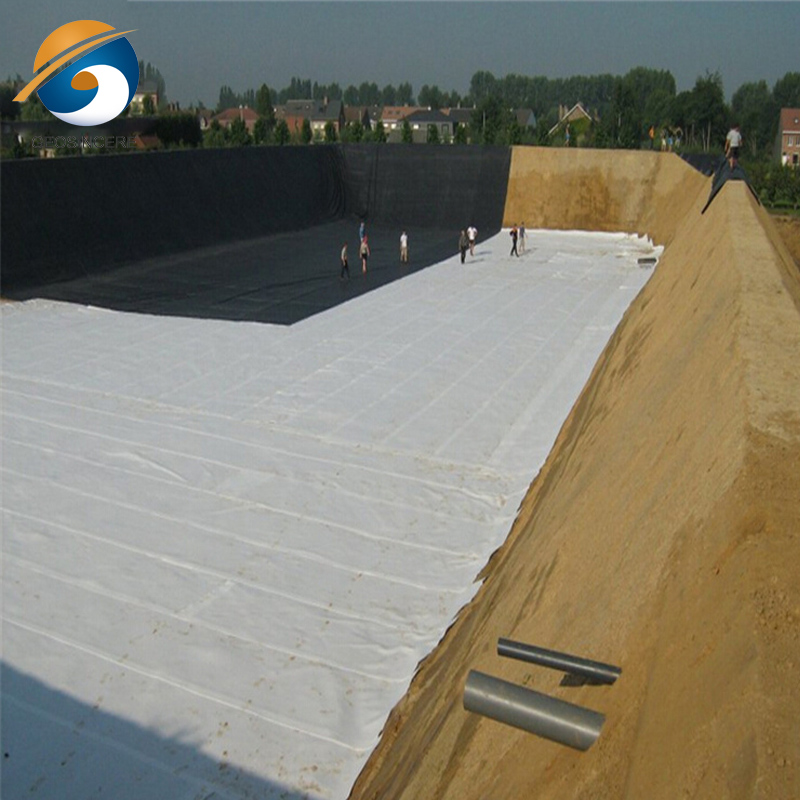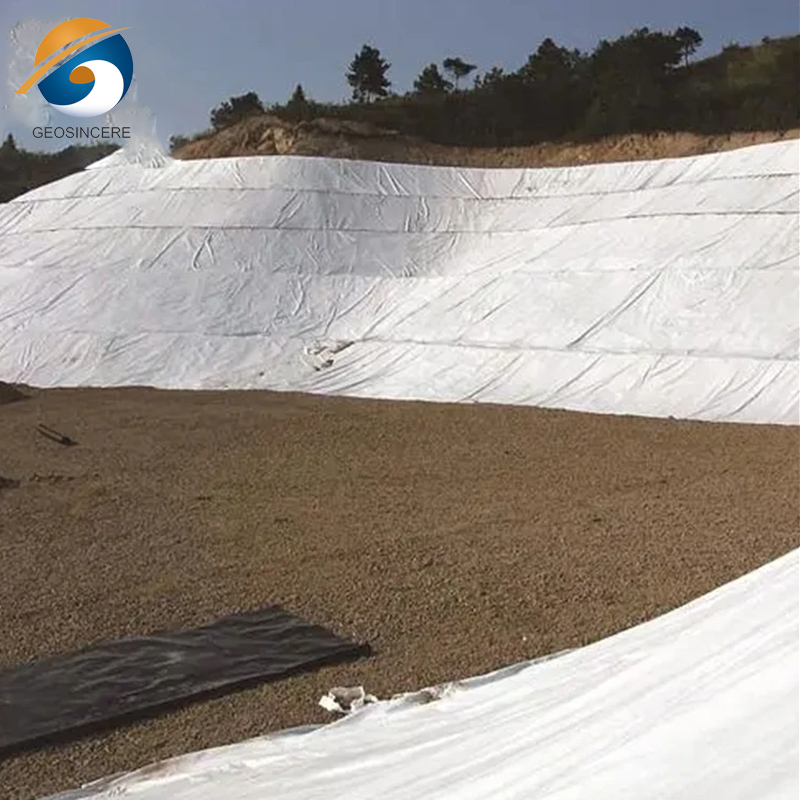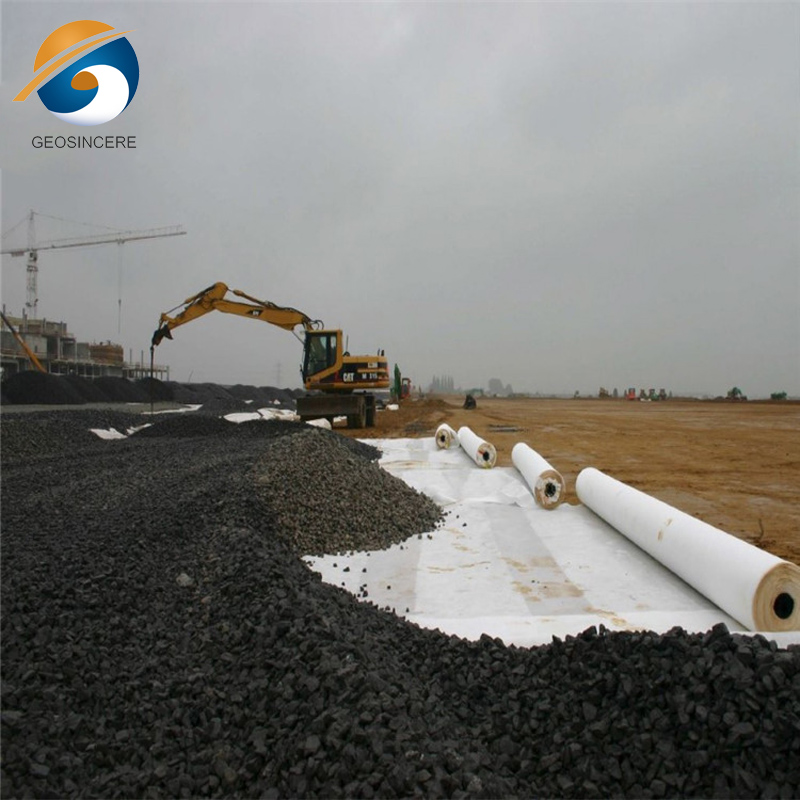What Is Non Woven Geotextile Fabric And Its Applications?
Non woven geotextile is a permeable material composed of synthetic or natural fibers, manufactured by mechanical, chemical, or thermal bonding methods. Unlike traditional woven fabrics, non-woven geotextiles have high permeability, high strength, corrosion resistance, and good flexibility. These characteristics make it widely used in fields such as roadbed and pavement engineering, embankment and slope engineering, landfill and sewage treatment plants, agriculture and landscaping engineering, and construction engineering, mainly for functions such as isolation, filtration, drainage, reinforcement, anti-seepage, and protection. This article takes you to a deeper understanding of non-woven geotextiles.
1. What Is Non woven geotextile?
Non woven Geotextile is a unique civil engineering material made from synthetic or natural fibers and manufactured by mechanical, chemical, or thermal bonding. Unlike traditional woven fabrics, non-woven geotextiles have many unique performance advantages.
It has extremely high permeability. Due to the high porosity and permeability of the material itself, non-woven geotextiles can effectively perform drainage and filtration functions. This makes it play an important role in various civil engineering applications. Secondly, non-woven geotextiles also exhibit high strength characteristics. The interweaving and entanglement process of fibers endows them with good tensile strength and tear resistance, which can meet the mechanical requirements in various engineering environments.
In addition, this material also has excellent corrosion resistance. Most non-woven geotextiles can resist chemical corrosion and biological invasion, and have a long service life. This is crucial for some applications in special environments.
Finally, non-woven geotextiles also have good flexibility and plasticity. This makes it more convenient and flexible in on-site construction, and can adapt to various complex engineering terrains and structures.
Due to the numerous excellent characteristics mentioned above, non-woven geotextiles are widely used in many fields such as roadbed and pavement engineering, embankment and slope engineering, landfill and sewage treatment plants, agriculture and landscaping engineering, and construction engineering. They are mainly used for isolation, filtration, drainage, reinforcement, anti-seepage, and protection functions. It can be said that this material has become an indispensable and important component of modern civil engineering.
2.What Are the Features of Non Woven Geotextile Fabric?
2.1 High Permeability
Non-woven geotextiles have a high porosity and transmissivity, allowing them to effectively perform drainage and filtration functions. This is due to the inherent structure of the material, which is composed of interconnected pores and channels.
2.2 Separation
Geotextiles can be used to separate different soil layers or aggregates, preventing the intermixing of materials with different properties.
2.3 Reinforcement
The tensile strength of non-woven geotextiles can provide reinforcement to soil structures, improving their load-bearing capacity.
2.4 High Strength
The interlocking and entanglement of the fibers in non-woven geotextiles give them excellent tensile strength and tear resistance. This allows them to withstand the demanding mechanical requirements of various engineering applications.
2.5 Durability
Most non-woven geotextiles exhibit outstanding resistance to chemical and biological degradation, ensuring long service life even in harsh environmental conditions. This is an important characteristic for applications where the material is exposed to corrosive or biological factors.
2.6 Flexibility and Conformability
Non-woven geotextiles have a high degree of flexibility and conformability, making them easy to install and adjust on-site to suit complex engineering terrains and structures. This adaptability is a key advantage during construction and installation.
2.7 Ease of Handling
The pliable and lightweight nature of non-woven geotextiles makes them convenient to handle and transport, facilitating efficient on-site deployment and integration with other construction materials.
These unique features of non-woven Geotextile Fabric contribute to its widespread use and versatility in various civil engineering applications, where it serves critical functions such as separation, filtration, drainage, reinforcement, impermeabilization, and protection.
3. What Are Applications of Non woven geotextile fabric?
3.1 Roadway Construction
Non-woven geotextiles are used as a separation layer between the soil subgrade and the aggregate base course to prevent the intermixing of materials, improving the road's stability and load-bearing capacity.
3.2 Drainage Systems
Geotextiles are used as filters in drainage applications, such as along the sides of drainage pipes or in French drains, to allow water to flow while preventing the movement of fine soil particles.
3.3 Erosion Control
Geotextiles are used as a protective layer on slopes, embankments, and shorelines to prevent soil erosion caused by water, wind, or wave action.
3.4 Landfill Construction
Geotextiles are used as a barrier between the soil and the landfill liner, preventing the migration of contaminants and ensuring the integrity of the liner system.
3.5 Soil Reinforcement
Geotextiles can be used to reinforce soil structures, such as retaining walls, embankments, and slopes, improving their overall stability and load-bearing capacity.
3.6 Filtration and Separation
Geotextiles are used in various applications, such as beneath railroad tracks, to separate different soil layers and prevent the intermixing of materials with different properties.
3.7 Environmental Applications
Geotextiles are used in environmental remediation projects, such as the containment of hazardous waste or the construction of permeable reactive barriers for groundwater treatment.
3.8 Coastal Protection
Geotextiles are used in coastal engineering projects, such as the construction of breakwaters and beach nourishment, to protect against erosion and stabilize shorelines.
3.9 Agricultural Applications
Geotextiles can be used in agricultural applications, such as lining irrigation canals or providing a substrate for growing crops in hydroponic systems.
The versatility and durability of non-woven geotextile fabrics make them a valuable component in a wide range of civil engineering and construction projects.
4. Under What Geological Conditions Can Non-woven Fabrics Be Used?
4.1 Soft and Weak Soils
- Soils with low bearing capacity, such as clay, silt, or peat-rich soils
- Areas with high compressibility and low shear strength
4.2 Steep Slopes and Embankments
- Slopes prone to erosion and instability
- Embankments and retaining walls
4.3 Highly Permeable Soils
- Sandy or gravelly soils with high hydraulic conductivity
- Areas with high groundwater levels or potential for rapid drainage
4.4 Expansive or Shrink-Swell Soils
- Soils with a high clay content that are prone to volume changes with changes in moisture content
4.5 Contaminated or Hazardous Soil Conditions
- Areas with the presence of hazardous materials or contaminants in the soil
4.6 Wet and Marshy Conditions
- Wetlands, floodplains, and areas with a high water table
4.7 Cold Climates
- Regions with freeze-thaw cycles that can affect soil stability
The selection of the appropriate non-woven geotextile fabric and its properties (e.g., tensile strength, permeability, durability) should be based on the specific geological conditions and the requirements of the project.
5. Conclusion
The versatility and durability of non-woven geotextile fabrics have made them an indispensable component in civil engineering and construction projects, addressing a wide range of geological conditions and infrastructure requirements. Their ability to separate, filter, reinforce, and drain soils has been instrumental in enhancing the stability, performance, and sustainability of built environments, making them a true marvel of modern engineering.



